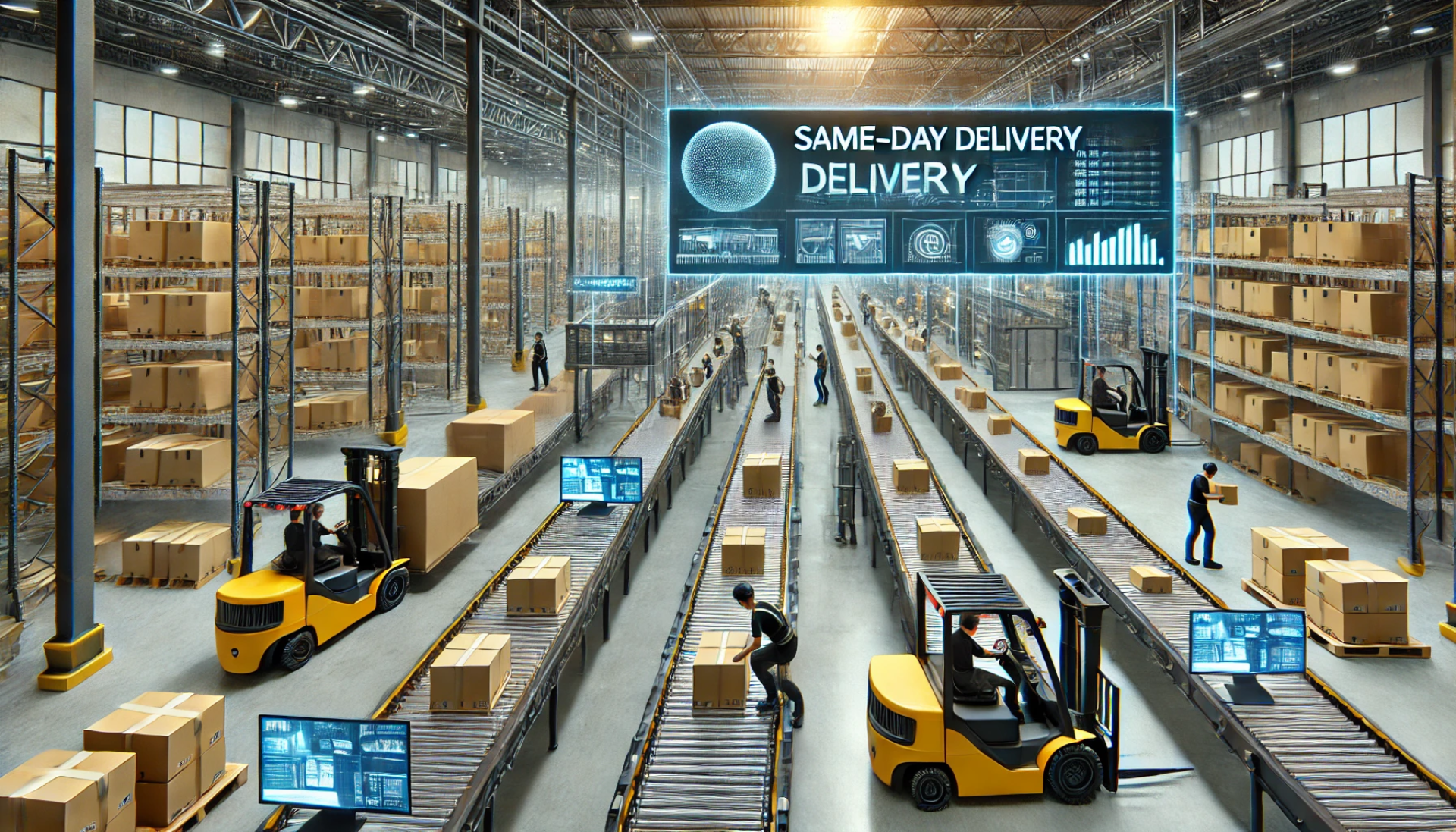The Changing Face of Food Manufacturing: What the Next Generation of Workers Want
The food manufacturing industry stands at a critical crossroads. While global food demand continues to rise, the sector faces an unprecedented workforce challenge: attracting and retaining the next generation of talent.
Industry leaders are confronting a sobering reality: according to Food Processing magazine's 2023 Workforce Survey, 78% of food manufacturers identify recruitment and retention as their most significant operational challenge—ranking above supply chain disruptions, regulatory compliance, and even profitability concerns.
As baby boomers retire in record numbers, what the next generation of workers want in the food industry has fundamentally shifted. Understanding these evolving expectations isn't just a HR concern—it's an existential business imperative
The Generational Shift Transforming Food Manufacturing
The demographic transformation within food manufacturing workforces is occurring at unprecedented speed. According to Deloitte's 2023 Manufacturing Talent report, by 2025, millennials and Gen Z will comprise over 60% of the manufacturing workforce—up from just 27% a decade ago.
This new generation brings dramatically different expectations, values, and career aspirations. For an industry traditionally focused on stability and consistency, adapting to these shifting workforce demands requires nothing short of a cultural revolution.
"The manufacturing talent crisis isn't about a lack of available workers," notes Dr. Susan Helper, former Chief Economist at the U.S. Department of Commerce in a recent manufacturing workforce study. "It's about a fundamental misalignment between what manufacturing employers offer and what today's workers demand."
Let's examine what this next generation of food manufacturing talent truly wants—and how forward-thinking companies are already adapting to meet these expectations.
Beyond Compensation: The New Workforce Priorities
While competitive pay remains important, research shows today's manufacturing talent has a significantly broader set of priorities:
1. Meaningful Work and Social Impact
The next generation of workers doesn't just want a job—they want purpose. According to Gallup's 2023 Workplace Report, 70% of millennials and Gen Z workers expect their employer to take a public position on social and environmental issues, and 67% consider a company's sustainability practices when evaluating job opportunities.
For an industry directly connected to global food systems, highlighting your company's sustainability initiatives and social impact is no longer optional:
According to research from Unilever, food companies with clear sustainability commitments experience 50% faster growth than their peers, and report 28% higher success in talent acquisition.
How industry leaders are responding:
- Archer Daniels Midland (ADM) has implemented a comprehensive sustainability initiative that actively involves employees in waste reduction projects and community food security programs, resulting in a 34% increase in job application rates, according to their 2023 sustainability report.
- Nestlé has created a "Sustainability Champions" program where early-career employees can allocate 15% of their work time to environmental projects—a program cited by 47% of their recent hires as a key factor in accepting their offers, as reported in their 2023 workforce survey.
2. Work-Life Integration and Flexibility
The concept of rigid 9-to-5 shifts with minimal flexibility is increasingly obsolete. The 2023 Manufacturing Work-Life Study by the Manufacturing Institute found that 83% of manufacturing workers under 35 ranked flexibility as "very important" or "extremely important" in their job selection process.
This presents a particular challenge for food manufacturing, where production schedules and food safety protocols often require precise timing and physical presence.
How industry leaders are responding:
- General Mills has introduced a "core hours" approach for certain production roles, where teams must be on-site during critical production windows but can flex schedules around these periods. According to their 2023 workforce report, this program has reduced turnover by 23% in participating facilities.
- Tyson Foods has implemented a compressed workweek option at select facilities, offering three 12-hour shifts instead of the traditional five 8-hour shifts. This innovation has improved recruitment in competitive markets, with a 41% increase in application rates for these positions, according to their quarterly labour report.
Stephen Roach, Director of Manufacturing at the Boston Consulting Group, notes in his analysis of manufacturing workforce trends: "The perception that manufacturing roles cannot accommodate flexibility is increasingly outdated. The most innovative food manufacturers are finding creative ways to introduce flexibility without compromising production requirements."
3. Technology Integration and Digital Upskilling
Contrary to popular narratives about manufacturing jobs declining due to automation, younger workers are actively seeking roles where technology enhances their work. McKinsey's 2023 Future of Work in Manufacturing report found that 74% of manufacturing workers under 30 cite "access to advanced technology" as a top factor in job selection.
For food manufacturers, embracing Industry 4.0 technologies isn't just about productivity—it's a crucial recruiting advantage.
How industry leaders are responding:
- Danone North America has implemented augmented reality (AR) maintenance systems that allow technicians to visualise machinery components and receive real-time guidance. This initiative has reduced training time by 60% while making these roles more attractive to tech-savvy candidates, according to their innovation report.
- JBS USA has created a Digital Manufacturing Academy, providing employees with training in data analytics, automation systems, and digital process control. Participants receive certification and accelerated promotion opportunities, which has improved retention rates by 47% among employees under 35, as noted in their 2023 talent development case study.
The message is clear: today's manufacturing talent doesn't fear automation—they fear being left behind by it. Food manufacturers that offer clear technology upskilling paths gain a decisive edge in recruitment.
4. Career Pathways and Continuous Learning
Perhaps no expectation has shifted more dramatically than attitudes toward career development. The 2023 Manufacturing Employee Experience Survey by Aon found that 65% of manufacturing employees under 35 would leave their current employer within two years if they didn't see clear advancement opportunities.
"The new generation of manufacturing workers views career stagnation as failure," explains Dr. Karen Bellemare, Manufacturing Workforce Specialist at Cornell University, in her research Modern Manufacturing Career Expectations. "Monthly or even quarterly performance reviews are replacing the traditional annual review, and employees expect regular feedback on their progression."
How industry leaders are responding:
- Mondelēz International has implemented a "Career Lattice" program that visualises both vertical and horizontal growth opportunities throughout the organisation. According to their talent acquisition metrics, facilities with this program see 37% higher retention rates among employees with less than five years of tenure.
- PepsiCo has created dedicated learning paths for manufacturing employees, with certifications in food safety, team leadership, and specialised production roles. Employees with at least one certification are 3.8 times more likely to be promoted and report 44% higher job satisfaction, according to their 2023 workforce report.
5. The Unexpected Priority: Workplace Culture and Belonging
While the factors above are frequently cited in workforce studies, one element consistently emerges as a powerful but often overlooked driver of retention: workplace culture and sense of belonging.
The 2023 Food Industry Employee Satisfaction Survey by FoodProcessing.com found that "workplace culture" was the single strongest predictor of retention among employees under 40—ranking above compensation, benefits, and even career advancement opportunities.
What specifically constitutes a positive culture? Today's workers emphasise:
- Psychological safety: The ability to speak up, propose ideas, and even make mistakes without fear of disproportionate consequences
- Inclusivity: Active efforts to ensure diversity and make all employees feel valued
- Recognition: Regular acknowledgment of contributions and achievements
- Communication transparency: Clear, honest information about company challenges and direction
Dr. Amy Edmondson, Harvard Business School professor and leading psychological safety researcher, explains in her 2023 manufacturing workplace study: "In manufacturing environments with high psychological safety, we see 41% higher quality metrics, 34% lower accident rates, and 67% higher innovation scores. Yet only 28% of manufacturing organisations measure psychological safety—a significant missed opportunity."
How industry leaders are responding:
- Mars, Inc. has implemented a "Speak Up" program that actively solicits employee feedback on workplace conditions, management effectiveness, and process improvements. Facilities with high participation rates show 29% lower turnover and 23% higher productivity, according to their employee engagement analysis.
- Kellogg's has created plant-level Inclusion Councils led by frontline employees, with direct access to senior leadership. According to their diversity and inclusion report, facilities with these councils experience 35% fewer workplace incidents and 27% higher application rates from underrepresented groups.
Bridging the Expectation Gap: Implementation Strategies
Understanding what the next generation wants is the first step. Successfully implementing changes to meet these expectations is where many food manufacturers struggle. Based on successful case studies across the industry, here are practical strategies to bridge the expectation gap:
1. Start with Targeted Assessment
Before making sweeping changes, gather specific data on your current workforce expectations:
- Conduct anonymous engagement surveys with demographic segmentation
- Host structured focus groups with open-ended discussions
- Analyse exit interview data for recurring themes
- Benchmark your offerings against competitors and adjacent industries
Campbell Soup Company's talent retention initiative began with a comprehensive workforce assessment that identified specific expectation gaps by location, job role, and employee tenure. This targeted approach allowed them to prioritise initiatives with the highest retention impact, achieving a 23% reduction in turnover within 12 months.
2. Communicate Purpose Beyond Profit
Today's workforce wants to understand how their daily work contributes to something larger. This requires consistent, authentic communication:
- Connect production metrics to end-user impact
- Share customer stories and feedback with production teams
- Create clear line-of-sight between individual roles and company mission
- Involve employees in community and sustainability initiatives
Chobani's purpose-driven manufacturing approach has made them a talent magnet in a competitive industry. Their quarterly "Impact Days" connect production employees directly with food security initiatives, giving frontline workers tangible evidence of their social impact. This program is cited by 52% of new hires as a differentiating factor in their employment decision.
3. Implement Modular Flexibility
Rather than attempting wholesale scheduling overhauls, successful manufacturers implement flexibility in targeted modules:
- Identify production processes where timing flexibility exists
- Create schedule-sharing programs within trained teams
- Offer periodic schedule predictability (4-week advance notices)
- Develop core hours models for applicable roles
- Test compressed workweek options in select departments
Dean Foods found success with their modular flexibility program, implementing different approaches across various production areas rather than a one-size-fits-all solution. This tailored strategy improved work-life satisfaction scores by 31% while maintaining production consistency.
4. Develop Visual Career Progression Maps
Ambitious workers need to see their potential future with your organisation:
- Create visual progression paths with skills requirements
- Define clear timeframes for advancement eligibility
- Include both technical and leadership tracks
- Connect each role to specific training resources
- Showcase internal success stories
Post Holdings' career mapping initiative uses digital career visualisation tools that allow employees to explore various advancement paths and the qualifications required for each. Facilities using this system report 28% higher career satisfaction scores and 42% more internal promotion applications.
The Business Case for Meeting New Workforce Expectations
For executive leadership weighing the costs of workforce initiatives against other priorities, the business case is increasingly clear. According to Deloitte's Food Manufacturing Talent Economics study:
- The average cost of turnover for a skilled food production worker exceeds $25,000 when accounting for recruitment, training, and productivity impacts
- Facilities with top-quartile employee engagement scores average 41% fewer quality incidents and 48% fewer safety incidents
- Companies with reputation scores as "employers of choice" spend 30% less on recruitment and fill positions 41% faster
Dr. Michael Porter of Harvard Business School notes in his analysis of manufacturing competitiveness: "The most sustainable competitive advantage in manufacturing today isn't technology—which can be purchased—but the human capital that deploys that technology effectively. Food manufacturers who view talent investment as a cost center rather than a competitive advantage are increasingly falling behind."
Building the Future Food Manufacturing Workforce: Your Next Steps
As labour markets tighten and workforce demographics continue shifting, food manufacturers must take concrete action to align with next-generation expectations. Based on industry best practices, consider these immediate next steps:
- Conduct a generation-segmented workforce assessment to identify specific expectation gaps
- Evaluate your employer value proposition against the priorities outlined in this analysis
- Identify one key initiative in each expectation category (purpose, flexibility, technology, career development, and culture)
- Develop implementation roadmaps with clear metrics and accountability
- Create communication strategies that highlight your commitment to workforce evolution
The food manufacturers who thrive in the coming decade will be those who recognise a fundamental truth: the expectations of the workforce have permanently changed. Meeting these expectations isn't just about recruitment and retention—it's about building the foundation for sustainable business performance in an increasingly competitive marketplace.
_________________________________________________________________
Recruit Mint specialies in connecting food manufacturers with talent. Our industry-specific recruitment solutions help companies align their workforce offerings with evolving employee expectations. Contact our food manufacturing specialists today to discuss your talent acquisition challenges and develop a workforce strategy that positions your organisation as an employer of choice.











